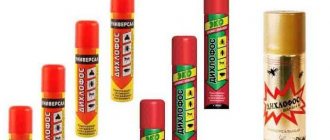Olive oil is considered part of the Mediterranean diet and is the healthiest of all vegetable fats. It is rich in fatty acids, which helps reduce the level of “bad” cholesterol and normal functioning of the human cardiovascular system. This product is considered to be most useful within the first 12 months from the date of manufacture. After this, processes begin to occur in it that reduce quality and consumer properties. But to prevent this from happening ahead of time, you need to know where and how to store olive oil.
How to choose
When buying oil, you should decide what exactly it is for. If you purchased it for frying in a frying pan, you don’t have to overpay for Extra Virgin. No one will receive any particular benefit from it; rather, on the contrary. For frying, it is better to choose a refined product.
There are several other definitions for good quality oil. It is advisable that the container be marked “DOP”. This designation is used for a product that is made and bottled in the same country where the raw materials for its manufacture grew. The mark “IGP” on the label will indicate that the oil was not produced and bottled where the olives were grown.
Another important point to pay attention to is the time between making and bottling the product. The smaller it is, the more beneficial the oil is, which has not been in contact with the environment for too long.
The color of the olive oil does not play a role in this case. It can have a tint from greenish to yellow. It depends on the type of olives that were used to produce it. As well as the degree of their ripeness, processing technology and region of growth.
When exposed to light, this product loses quality, so it would be better to buy it in tin containers or dark glass bottles .
It is important to remember that a real manufacturer with a good reputation will not bottle their products in transparent plastic containers.
Spill date is an important indicator
The freshness of the oil is determined by the date it was bottled. The closer it is to the time of purchase, the better. It is good if this time does not exceed 6 months, since the long journey to the consumer deprives the product of a significant part of its beneficial qualities.
The average shelf life of olive oil is 1 year. But you can often see that the manufacturer increases this time to 24 months. If stored properly, the product will not really lose quality even after 2 years, but its taste and aroma may change significantly. Therefore, it is better to choose the freshest oil from the entire range.
When purchasing, it is important to pay attention to the location of the product on the shelf in the store. If light falls on it, it is better to take the product from the deepest shelf. Products with a more recent release date are usually placed there.
It is important to know that high-quality oil cannot be poured into plastic containers. Most likely, it contains parts of olive and sunflower (corn) mixed.
Marking according to TR CU 024/2011
Technical Regulation of the Customs Union 024/2011 requires that the expiration date be indicated in the following parameters:
- “Good…(hours, days, months, years);
- "Sell by…";
- “Use before...”
According to Art. 474 of the Civil Code of the Russian Federation, the manufacturer is obliged to indicate the date before which the product is suitable, thus, if the product says “best before 08/05/2019”, this means that on August 5 at 00:00 this product is no longer suitable for use.
To correctly inform the consumer, all information about the product must be indicated on its packaging. The following items are required information:
- shelf life of the product;
- date of manufacture and packaging (bottling) of the product;
- requirements for the conditions of product maintenance.
If the olive oil was not produced in the Russian Federation, you should pay attention to the following markers and designations:
- Series number (6 digits). Of these, the first two indicate the product series, and the rest the month and year. It looks in the following format: 00 (series).00 (month).00 (year).
- Rearrangements also occur when the series number moves to the end of the digital series.
- The word “Expiry” or “Expiry date” means expiration.
- The designation "Mfd", "Manufactured" or "Mfg" indicates the date the product was manufactured or pressed.
Under what conditions should it be stored?
Storing olive oil is most effective when the following conditions are met:
- place closed from light;
- no sudden temperature changes;
- limiting interaction with oxygen.
Therefore, those who are interested in how to store olive oil after opening it only need to rule out these factors.
It is better to purchase the product in small containers in order to use it exclusively fresh. Storing olive oil for a long time will cause it to go rancid and lose its pleasant aroma.
The storage temperature of olive oil should be between +12°C -+25°C.
- In cooler conditions it forms sediment.
- And in a too warm place, it loses quality as a result of fermentation (coagulation) of the protein, which is present here in the amount of 0.28 g. per 100 gr. product.
Reasons why oil spoils
Manufacturers prefer not to keep the product in warehouses for a long time: if closed, the seasoning loses its nutritional value after a couple of years.
At home, the liquid will quickly become unusable if the storage conditions are violated if:
- the container is always on the kitchen table (window sill);
- containers are often left open;
- Plastic bottles are used for storage.
Important! If the container is larger than the volume of the contents, the void is filled with air. An oxidation reaction begins, reducing the shelf life of the oil.
Tin containers do not provide a good seal: adhering liquid prevents the lid from fitting tightly. The slightest crack is enough for air to seep inside.
Read more ► Shelf life of eggs in the refrigerator and at room temperature
When keeping a product open, quality is affected not only by contact with oxygen. Provencal seasoning absorbs surrounding odors, losing its own aroma.
Storage containers
Olive oil that was purchased in glass containers should be sealed tightly each time after use. To ensure that the product has as little contact with the external environment as possible, it is poured in small portions into containers of the appropriate size. It is better if the neck of the container is narrow (this minimizes contact of the product with oxygen).
- There are special storage vessels on sale made from ceramics or dark glass. But in this case, containers with a minimum neck diameter are considered ideal.
- It is best to pour the liquid into a sealed container immediately after purchase. If the bottle is transparent, you can preserve the quality of the product by wrapping it in foil.
- It is possible to store olive oil correctly if you place it in a dark, closed container.
How long does olive oil last after opening the bottle?
After opening the container, it is recommended to store the oil for no more than two months. It is advisable to use the product within four weeks. This applies to both refined and unrefined varieties.
You need to decide in advance how much seasoning will be used per month, and select the container volume accordingly.
Important! If more than a month has passed since opening the container with oil, but all storage conditions have been met, it will acquire the properties of sunflower oil. This product is used for frying and preparing dressings for hot dishes.
Frozen storage
When defrosting, the consumer quality of olive oil is partially reduced. Based on this, there is no point in keeping it in the freezer. Of course, there are recipes that preserve the original quality of the product for as long as possible. Here's one of them.
- Chopped greens are poured with a small amount of olive oil (3:1) and distributed into freezing molds.
- After this, they are used to prepare salads, sauces, soups, and meat gravies. This product perfectly preserves the properties of green seasonings, which will give you a summer mood at any time of the year.
Knowing how to properly store olive oil is very important. Remember that it can bring not only benefits, but also harm to the body.
Temperature
We are all accustomed to the fact that to prolong the freshness of food, it is necessary to store it in the refrigerator. Many people follow the same principle with olive oil - and make a mistake.
Low temperatures lead to the formation of a white precipitate that will disappear when heated. Also, the cooled product often becomes cloudy and changes color. Such metamorphoses negatively affect its taste and nutritional value. In this regard, storing it in the refrigerator, much less in the freezer, is not recommended.
Important!
The optimal temperature for storage is from +14°C to +18°C. Do not expose the product to frequent changes in temperature, otherwise it will quickly acquire an unpleasant bitterness.
Main varieties
Don't rush to buy a product that has a lower price tag. Read the label carefully. Depending on the degree of purification, three main varieties can be distinguished.
- Extra Virgin and Virgin. This is an unfiltered premium oil produced by cold pressing. That is, by simply pressing the fruit. A kind of fresh olive juice. It has a rich aroma and tart taste with a mild bitterness. The best use is in salads and sauces. Frying on it is wasteful and unhealthy, because it quickly begins to “burn” and release carcinogens.
- Refined. Refined oil. After filtration, the product loses its pronounced aroma and taste, as well as some of the fat. But when frying it does not smoke and is cheaper. But keep in mind: it is not recommended to fry it again; it is better to pour out the remaining oil immediately after cooking.
- Pomace. This oil is extracted from the pressings left over from the production of Virgin Oil. This is where heat treatment of the cake and various reagents come into play. Accordingly, such a product does not have the nutritional value that we expect from “liquid gold”. You can fry it (you can’t heat it twice!), but it’s not suitable for salads and dressings at all: no taste, no aroma, no benefit. Plus - low price.
There are also various mixtures of these varieties. In this case, the bottle will be marked Mix or the name will contain the words: Pure Olive Oil (unrefined plus purified), Olive Oil (unrefined plus purified, but more filtered), Olive-pomace Oil (refined plus pomace oil).
Composition and benefits
Olive juice consists of 99.8% fats, of which only 14.4% are saturated, and the rest are polyunsaturated (Omega-3 and Omega-6) and monounsaturated (Omega-9), that is, those that bring us exclusively benefit. Which omega-3s are better, read here. There are no harmful trans fats at all. It also contains vitamins (A, D, E, K, group B) and antioxidants. The table describes in more detail the role of olive oil components.
Table - Composition and benefits of olive oil
| Substance | Benefit |
| Omega-6 (mainly linoleic acid) | — Anti-inflammatory effect; - lowering cholesterol; - strengthening of blood vessels; - normalization of blood sugar; — strengthening cartilage tissue; — slowing down the aging process of tissues; — improvement of brain activity; — reducing the risk of developing cancer |
| Omega-9 (mainly oleic acid) | — Improving the functioning of the heart and blood vessels; — maintaining blood glucose levels; — strengthening the immune system; - lowering cholesterol; — reducing the risk of developing cancer |
| Antioxidants (polyphenols) | — Normalization of blood pressure; - maintaining normal heart function; - protection against free radicals; — prevention of atherosclerosis; — reducing the risk of developing cancer; - strengthening cell membranes; - improving the regenerative ability of cells |
| Vitamin A | — Strengthening the immune system; - antioxidant effect; - participation in protein synthesis; — normalization of metabolic processes; - strengthening cell membranes; – protection of bone tissue from destruction |
| Vitamin E | — Decrease in blood sugar; - antioxidant effect; - prevention of Alzheimer's disease; — reducing the risk of developing cancer; — normalization of hormonal levels; — improvement of skin turgor; - strengthening the walls of blood vessels; - maintaining immune functions |
| Vitamin D | — Improving calcium absorption; — stimulation of cell growth and regeneration; - protection of nerve fibers; — synthesis of immune cells; - normalization of blood glucose levels |
| Vitamin K | — Growth and strengthening of bone tissue; - maintaining liver function; - increased blood clotting; – neutralization of poisons and toxins |
| Choline (vitamin B4) | — Strengthening cell membranes; — normalization of fat metabolism; - protection of nerve fibers; — stimulation of cell regeneration; — maintaining liver and kidney functions; — prevention of atherosclerosis; — normalization of blood sugar levels; - improvement of brain activity |
Olive oil has a choleretic effect. If gallstone disease and other gastrointestinal pathologies are in the acute stage, consult your doctor. You may be better off stopping using the product.











